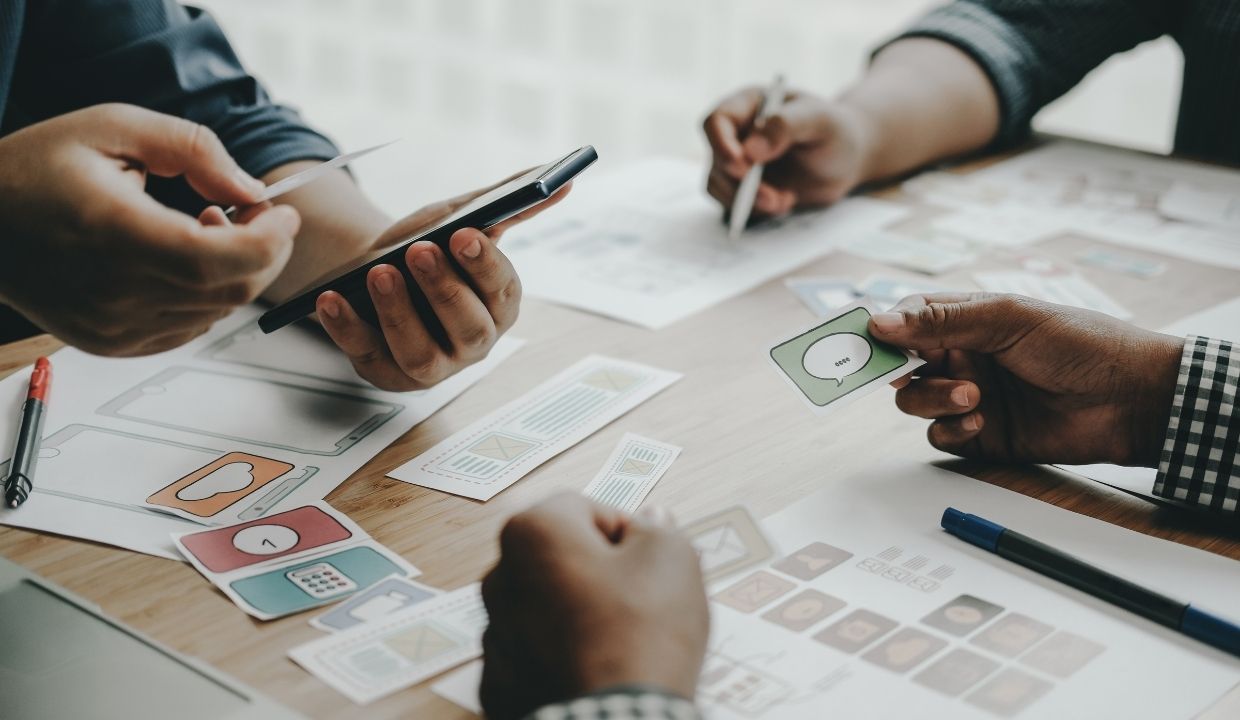Design plays a crucial role in shaping the way we perceive and interact with visual content in our modern world. Two prominent fields in the design industry are graphic design and web design. While they share some similarities, they also have distinct differences that set them apart. This article aims to explore the unique characteristics of both graphic design and web design, highlighting their respective roles and applications.
What is Graphic Design?
Defining Graphic Design
Graphic design is a creative discipline that involves using visual elements to communicate messages, ideas, or information to a target audience. It encompasses various mediums, including print, digital media, advertisements, and more. Graphic designers utilize their artistic skills and design software to craft visually appealing layouts.
Key Elements of Graphic Design
In graphic design, key elements such as color, typography, images, and composition are meticulously combined to create aesthetically pleasing and impactful designs. Designers focus on maintaining balance, harmony, and visual appeal in their work.
Applications of Graphic Design
Graphic design finds applications in creating logos, brochures, posters, packaging, book covers, social media graphics, and much more. It aims to evoke emotions, convey messages, and enhance the overall visual experience.
What is Web Design?
Web design is a crucial aspect of creating and shaping the visual elements and user experience of websites. It involves a combination of artistic creativity, technical skills, and user-centric thinking. Web designers aim to craft visually appealing, functional, and user-friendly websites that cater to the needs of the target audience.
Key Elements of Web Design
Web design encompasses several key elements that contribute to the overall look and feel of a website. These elements include:
- User Interface (UI) Design: UI design focuses on creating an intuitive and visually engaging interface that users interact with when browsing the website. It involves designing buttons, navigation menus, and other interactive elements to ensure a seamless user experience.
- User Experience (UX) Design: UX design is about understanding the needs and preferences of website visitors and tailoring the website’s structure and content accordingly. It aims to enhance user satisfaction and usability by making the site easy to navigate and ensuring quick access to information.
- Layout and Composition: The layout and composition of a website involve arranging the content, images, and multimedia elements in a visually appealing manner. A well-organized layout ensures that the website is easy to read and navigate.
The Role of a Web Designer
Web designers play a pivotal role in the website development process. They work closely with clients, stakeholders, and developers to bring the vision of a functional and aesthetically pleasing website to life. The responsibilities of a web designer include:
- Creating Wireframes and Prototypes: Before building the actual website, web designers create wireframes and prototypes to visualize the site’s layout and interactions. This step allows them to make necessary adjustments before development.
- Selecting Color Schemes and Typography: Web designers choose appropriate color palettes and typography to establish a consistent and visually appealing brand identity for the website.
- Responsive Design: With the prevalence of various devices, web designers ensure that the website is responsive, adapting to different screen sizes without compromising on user experience.
Tools Used in Web Design
Web designers utilize a range of tools and software to execute their creative and technical tasks effectively. Some popular tools used in web design include:
|
Tool |
Purpose |
|
Adobe XD, Figma |
Creating wireframes and prototypes |
|
Adobe Photoshop |
Editing and optimizing images |
|
CSS frameworks |
Enhancing website styling and responsiveness |
|
HTML, CSS, JavaScript |
Building and designing web pages |
In conclusion, web design is a multidisciplinary field that merges creativity with technical expertise to create visually appealing, user-friendly websites. The key elements of web design, such as UI design, UX design, and layout, play crucial roles in ensuring an optimal user experience. Web designers leverage various tools and collaborate with other stakeholders to develop websites that meet the specific needs and preferences of their target audience.
The Role of a Graphic Designer
Skills and Responsibilities
A graphic designer possesses artistic skills, a keen eye for detail, and a deep understanding of design principles. They work closely with clients to understand their vision and create visual solutions that meet their requirements.
Tools of the Trade
Graphic designers use various tools like Adobe Photoshop, Illustrator, and InDesign to bring their ideas to life. These software packages enable them to manipulate images, create illustrations, and design layouts effectively.
Collaboration with Clients
Graphic designers collaborate with clients to understand their brand identity, target audience, and project goals. They incorporate feedback during the design process to ensure the final output aligns with the client’s vision.
Differences Between Graphic Design and Web Design
1. Medium and Platform
- The primary distinction lies in the medium used for communication. Graphic design deals with static visuals, while web design involves designing for interactive digital platforms.
2. User Interaction
- Graphic design aims to captivate and convey a message through a single image or layout. In contrast, web design focuses on optimizing user experience by providing interactive elements and navigation.
3. Visual Elements
- Graphic design prioritizes aesthetics and artistic expression, while web design balances aesthetics with functionality to ensure a seamless user experience.
4. Design Process
- Graphic design often follows a linear process, while web design may involve iterative development and continuous improvements based on user feedback.
Overlapping Areas
Responsive Design
Both graphic and web designers must consider responsive design principles to ensure their work looks and functions well on various devices.
Typography
Typography plays a vital role in both graphic and web design, affecting readability and overall visual appeal.
Branding
Both disciplines contribute to a brand’s identity. Graphic designers create logos and branding materials, while web designers ensure consistent branding across digital platforms.
Choosing the Right Design Path
Considerations for Graphic Design
If you have a passion for art, enjoy creating visually striking imagery, and want to communicate messages through static visuals, graphic design may be the right path for you.
Considerations for Web Design
If you are interested in creating interactive and user-friendly digital experiences, have an eye for detail, and enjoy working with technology, web design could be your ideal career choice.
The Future of Design
As technology continues to advance, the lines between graphic design and web design may become even more blurred. The demand for skilled designers who can navigate both worlds is likely to increase.
In conclusion, both graphic design and web design are essential fields in the creative industry, each with its unique set of skills and applications. Graphic design focuses on static visual communication, while web design is all about creating interactive and functional digital experiences. Aspiring designers should consider their interests, strengths, and career goals to choose the path that best suits them in this ever-evolving design landscape.
FAQs
- Q:
What skills do I need to become a graphic designer? - A:
To become a graphic designer, you should have artistic skills, knowledge of design software like Adobe Photoshop and Illustrator, and an understanding of design principles. - Q:
Is web design challenging to learn for beginners? - A:
While web design can be challenging for beginners, there are numerous online resources and courses available to help you acquire the necessary skills. - Q:
Are graphic designers also proficient in web design? - A:
Some graphic designers may have skills in web design, but it’s not a guarantee. Web design requires specific technical knowledge and expertise. - Q:
Can I pursue both graphic design and web design simultaneously? - A:
Yes, you can pursue both fields simultaneously. The skills from one discipline can complement and enhance your work in the other. - Q:
What is the average salary for graphic designers and web designers? - A:
Salaries for graphic designers and web designers vary depending on factors like experience, location, and the size of the company, but they generally offer competitive earning potential.

